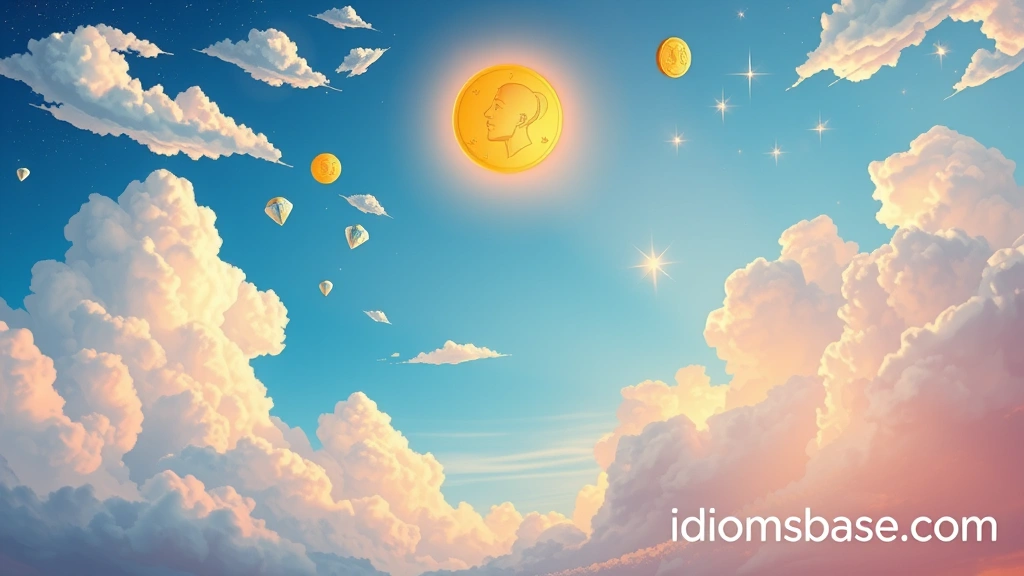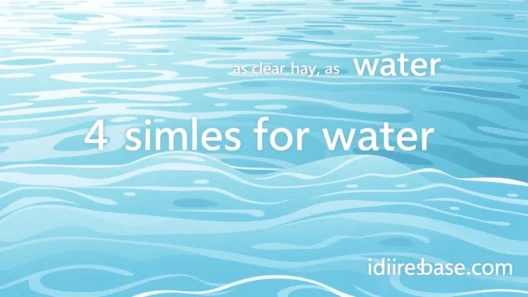Have you ever gazed up at the vast expanse above and found yourself searching for the perfect words to describe its ever-changing beauty? The sky, our everyday canvas, shifts from brilliant blues to fiery oranges, from a gentle whisper of dawn to a star-studded blanket of night. It’s more than just atmosphere; it’s a mood, a feeling, a source of endless wonder!
But sometimes, our usual vocabulary just doesn't quite capture its magic, does it? That's where similes come in! These clever comparisons, using "like" or "as," help us paint vivid pictures with words, bringing the sky to life in new and imaginative ways.
Get ready to unlock a treasure trove of descriptive power! We're about to dive into 40 incredible similes for the sky that will inspire your writing, elevate your conversations, and simply make you appreciate the world above a little bit more. Let’s explore the boundless possibilities together!
Why Similes Make Your Descriptions Soar
Before we jump into our fantastic list, let's quickly chat about why similes are such powerful tools. They don't just tell you what something is; they show you what it's like. This creates a stronger connection with your reader, making your words more memorable and your descriptions more impactful. Think of them as shortcuts to imagination!
40 Similes That Capture the Sky's Every Mood
Here you go! A carefully curated collection of similes to describe the sky in all its magnificent forms. You'll find comparisons for clear days, stormy nights, and everything in between.
- The sky was like a vast, inverted blue bowl. (Simple, classic, emphasizes expanse)
- The sky was as clear as crystal. (Highlights purity and transparency)
- The morning sky was like a freshly painted canvas. (Suggests newness and potential)
- The evening sky was like a molten gold. (Captures the rich, glowing colors of sunset)
- The night sky was like a sprinkled velvet cloth. (Evokes softness and stars like glitter)
- The sky was as dark as ink. (Describes a deep, moonless night)
- The stormy sky was like a bruised apple. (Conveys a dark, mottled, and ominous look)
- The sky was like an endless ocean. (Emphasizes its vastness and depth)
- The sky was as pale as a washed-out denim. (For a light, faded blue)
- The sky was like a giant, shimmering mirror. (Reflects light beautifully, often seen over water)
- The winter sky was like a sheet of hammered steel. (Suggests a cold, metallic gray)
- The sky was as soft as a baby's blanket. (For a gentle, comforting appearance)
- The cloudy sky was like a rumpled bedsheet. (Describes disorganized, bunched-up clouds)
- The sky was like a grand, silent theater. (Where clouds and light play out dramas)
- The dawn sky was like a blushing cheek. (Captures the soft, warm pinks of sunrise)
- The sky was as vast as a dream. (Highlights its limitless and ethereal quality)
- The sky was like a magician's cloak, constantly changing. (Emphasizes its dynamic nature)
- The sky was as empty as a forgotten room. (For a plain, cloudless, somewhat desolate look)
- The sky was like a patchwork quilt of clouds. (Describes varied cloud formations)
- The pollution-hazed sky was like dirty dishwater. (A less appealing but accurate comparison)
- The sky was as forgiving as a mother's embrace. (For a gentle, comforting sky)
- The sky was like a bottomless well. (Suggests immense depth and mystery)
- The sky was as bright as a freshly polished coin. (For a clear, gleaming day)
- The sky was like a giant watercolor painting. (Captures blended, soft colors)
- The sky was as rough as sandpaper. (For a harsh, textured, perhaps windy sky)
- The sky was like a stained-glass window at sunset. (Highlights vibrant, multi-colored light)
- The sky was as heavy as lead. (For a dark, oppressive, cloudy sky)
- The sky was like a cosmic tapestry. (Suggests intricate beauty, especially at night)
- The sky was as boundless as human imagination. (Emphasizes its infinite quality)
- The sky was like a vast, silent sentinel. (Watching over everything)
- The sky was as deep as a sapphire. (For an intensely blue day)
- The sky was like a cosmic mirror, reflecting our moods. (Connects the sky to human emotion)
- The sky was as fleeting as a whisper. (For quickly changing conditions)
- The sky was like a brooding giant. (For a dark, ominous, potentially stormy sky)
- The sky was as wide as forever. (A poetic way to express limitless expanse)
- The sky was like a grand amphitheater for the stars. (Where celestial events unfold)
- The sky was as unpredictable as a wild beast. (For a rapidly changing, powerful sky)
- The sky was like a forgotten memory, hazy and distant. (For a faint, unclear sky)
- The sky was as vibrant as a child's crayon box. (For a sky full of bright, diverse colors)
- The sky was like the turning pages of a book, revealing new stories. (Emphasizes its constant change and newness)
How to Choose the Perfect Simile
With so many options, how do you pick the right one? It's all about context and what emotion or image you want to convey!
- Consider the mood: Is the sky cheerful, ominous, peaceful, or dramatic?
- Think about the time of day: Dawn, noon, dusk, or night? Each has its own palette.
- Look at the weather: Clear, cloudy, rainy, stormy?
- What feeling do you want to evoke? Awe, fear, tranquility, wonder?
By asking these questions, you'll naturally gravitate towards the simile that fits best.
Elevating Your Writing with Sky Similes

Using these similes isn't just about making your sentences pretty; it's about making them powerful.
In Creative Writing
Imagine a character looking up at a "sky as heavy as lead" before receiving bad news. Or a "sky like a freshly painted canvas" signaling a new beginning. Similes add depth and subtext.
In Everyday Conversation
Even in casual chats, a well-placed simile can make your descriptions more engaging. Instead of "The sky was blue," try "The sky was like a vast, inverted blue bowl" – instantly more vivid!
For Marketing and Branding
Describing a product or experience? You could say a vacation offers "a sky as clear as crystal" to paint a picture of perfect weather, or a service provides "a sky as boundless as human imagination" to suggest limitless possibilities.

Frequently Asked Questions (FAQ)
You've got questions, we've got answers! Let’s dive into some common queries about similes and describing the sky.
Q1: What is a simile, and how is it different from a metaphor?
A simile is a figure of speech that directly compares two different things using the words "like" or "as." It says one thing is like another. For example, "The sky was like a blue bowl."
A metaphor, on the other hand, directly states that one thing is another, without using "like" or "as." It creates a stronger, more direct comparison. For example, "The sky was a blue bowl." Metaphors are often considered more forceful and poetic than similes.
Q2: Why are similes important in writing?
Similes are incredibly important because they:
- Enhance imagery: They help readers visualize what you're describing more clearly.
- Add vividness and color: They make your writing more engaging and less bland.
- Create deeper understanding: By comparing something abstract (like the sky's mood) to something concrete (like a bruised apple), they help readers grasp complex ideas.
- Show, don't just tell: Instead of just telling the reader the sky was dark, a simile like "The sky was as dark as ink" shows them the intensity of that darkness.
- Improve readability and memorability: Engaging comparisons stick in the reader's mind.

Q3: Can I use these similes in any type of writing?
Absolutely! These similes are versatile. You can use them in:
- Creative writing: Novels, short stories, poetry, screenplays.
- Descriptive essays: To paint vivid pictures.
- Journalism: In feature articles or travel pieces to add flair.
- Marketing copy: To make products or experiences more appealing.
- Speeches and presentations: To make your points more memorable and engaging.
- Everyday conversation: To add color and interest to your speech.
The key is to choose a simile that fits the tone and context of your writing.
Q4: How can I come up with my own similes for the sky?
Great question! Here’s a simple process:
- Observe the sky: Look closely at its color, texture (clouds), light, and overall feeling.
- Identify a key characteristic: Is it vast? Dark? Bright? Changing? Ominous?
- Brainstorm unrelated things with similar characteristics:
- If vast: ocean, desert, empty room, dream.
- If dark: ink, velvet, a black hole, a forgotten memory.
- If changing: a chameleon, a magician's cloak, a turning page.
- Formulate the comparison using "like" or "as": "The sky was like the turning pages of a book."
- Refine it: Does it sound good? Is it original? Does it convey the intended meaning? Practice makes perfect!
Q5: Are there any common mistakes to avoid when using similes?
Yes, there are a few:
- Clichés: Avoid overused similes like "as white as snow" or "as quick as a flash," unless you’re intentionally playing with them. Try to be original!
- Forced comparisons: Don't try to compare things that don't have a logical or imaginative connection. It can sound awkward or confusing.
- Overuse: Too many similes in one paragraph can make your writing feel cluttered and heavy. Use them strategically for impact.
- Inaccurate comparisons: Make sure the comparison truly reflects the characteristic you're trying to describe. A "sky as bright as night" doesn't make sense!
Keep these tips in mind, and your similes will shine!
Key Takeaways
- Similes are powerful descriptive tools: They use "like" or "as" to compare two different things, making your writing more vivid and engaging.
- The sky offers endless inspiration: Its ever-changing nature provides countless opportunities for creative comparisons.
- Context is king: The best simile depends on the mood, time of day, weather, and emotion you want to convey.
- Practice makes perfect: Observing the world around you and brainstorming comparisons will help you craft your own unique similes.
- Avoid clichés and overuse: Strive for originality and use similes strategically for maximum impact.
So, the next time you look up, take a moment to truly see the sky. Is it "as vast as a dream"? Or perhaps "like a grand, silent theater"? With these 40 similes and a little imagination, you now have the tools to describe its wondrous beauty in ways that will captivate and inspire. Go forth and describe the heavens with brilliance!





